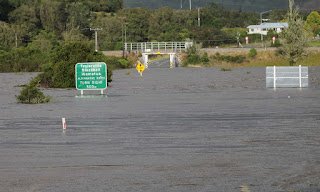Extreme Weather in New Zealand

Earlier in the year, New Zealand was hit with a "weather bomb" according to an article published by New Zealand's The Guardian . The heavy storm caused several damages including flooding major rural areas, power outages, and river overflows. The rainfall also caused several landslips, one that unfortunately buried some hot pools located in Dunedin. Fortunately, no citizens were harmed, and some even took advantage of the heavy rainfalls and went out in the streets to take a swim. Experts and researchers have analyzed the storm and they concluded that it is caused by a burst of hot air coming out of Australia that picks up moisture and intensity. This heat wave brought heavy rains and winds to the New Zealand coasts. Down below we can observe some of the significant damages this extreme storm caused. Reference: https://www.theguardian.com/world/2017/jan/23/new-zealand-weather-bomb-summer-snow-flooding
